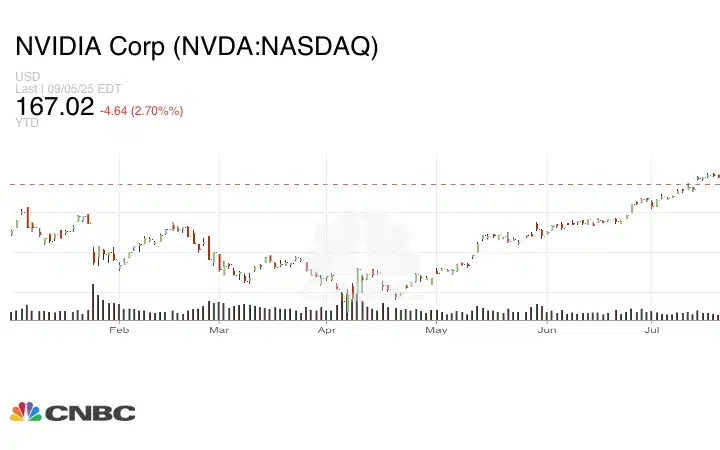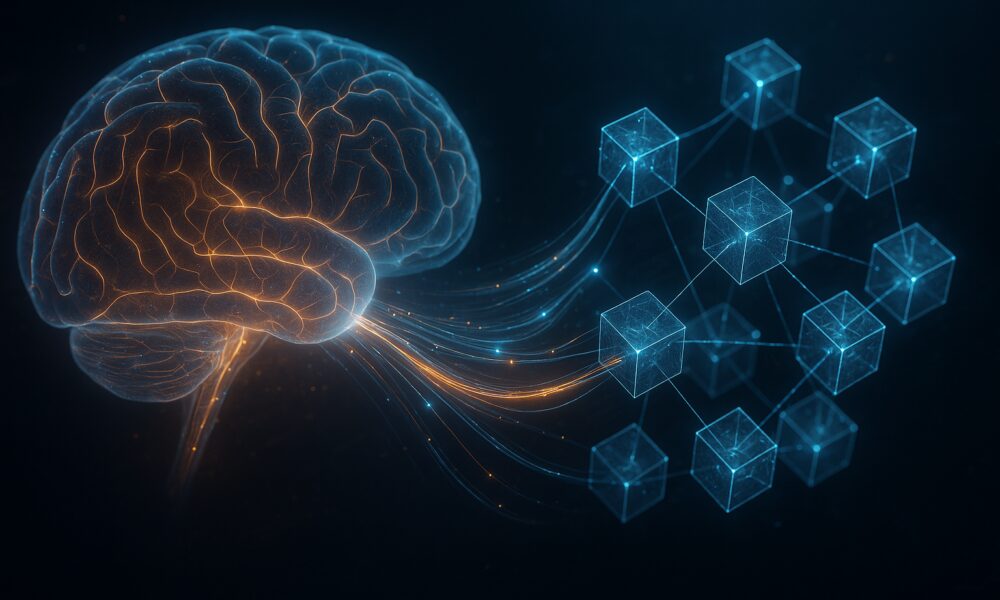Artificial intelligence and blockchain aren’t just meeting; they’re colliding to create a $36 billion market of AI-powered cryptocurrencies. This mashup is churning out decentralized systems that are smarter, safer, and more efficient, moving past the “what if” stage and into real-world use. The whole AI crypto scene is blowing up, riding the coattails of the wider AI boom, a flood of venture capital cash, and the simple fact that marrying AI with the blockchain actually works.
The big draws are things like automating tricky trading bots, finding new ways to sell data, and beefing up security on crypto networks. This combination is spawning a whole new class of projects where AI and blockchain live together, promising to upend everything from Wall Street to how we manage physical infrastructure.
The NVIDIA ripple and the VC cash injection
You can’t talk about AI without mentioning NVIDIA, and its massive success is casting a glow over the entire AI field, crypto included. As the chipmaker’s stock climbed, it’s pulled investor confidence up with it, sending money flying towards any token with an AI or decentralized computing story. This hype has definitely pumped the prices of AI coins, as traders bet on them becoming central to the AI-powered future.
However, it’s not a one-to-one relationship. Sure, a jump in NVIDIA’s stock might have kicked off an AI token rally in the past, but the market’s growing up. Investors are starting to look past the buzz and demand to see projects that actually do something useful. It’s a classic flight to quality.

Source: CNBC
Venture capital funds are betting big on the long game here. While most of their money is going into mainstream AI, a serious and growing slice is being carved out for projects that mix AI with blockchain. This “smart money” isn’t just a blank check; it comes with the expertise and connections to help these fledgling crypto startups find their footing.
5 heavyweights of AI crypto
As of early September 2025, a handful of major players are laying the groundwork for a world where AI isn’t locked up in corporate servers.


Source: CoinGecko
Bittensor (TAO) – Hive mind for machine intelligence
Think of Bittensor as an attempt to build a ‘global brain.’ It’s a network where AI models compete and cooperate, constantly learning from one another. The best-performing models get rewarded with TAO tokens inside specialized ‘subnets.’ Its token model deliberately echoes Bitcoin—a 21 million coin cap and a halving schedule to enforce scarcity.
There was no pre-sale or ICO. You earn your way in by contributing, making it a true ‘fair launch’ project that has caught the eye of both the AI crowd and a few institutions.
Render (RNDR) – Digital junkyard for idle GPU power
Render tackles a very real bottleneck – The crushing demand for GPU power. It’s essentially a distributed network where anyone with a spare high-end graphics card can rent out their idle processing time to artists, animators, and AI developers. Creators pay for this power using RNDR, and the people providing the hardware earn it.
It’s already found a solid footing in the digital arts—even big entertainment studios have used it—and it’s now angling to grab a piece of the even bigger AI training market.
NEAR Protocol (NEAR) – Blockchain built for AI agents
Built for speed, the NEAR blockchain has cleverly positioned itself as the go-to platform for AI-driven apps. Its core tech, a sharding method called Nightshade, can handle the insane amount of transactions that AI applications require. The grand vision is to create an open digital economy where autonomous AI agents can freely transact and operate on the blockchain.
The NEAR token itself pays for transaction fees and secures the network through staking. As a neat trick, some fees are burned, which could make the token more scarce as more people use the network. The whole ecosystem is pushing hard for mainstream adoption, especially by helping developers build tools for on-chain AI traders and other smart agents.
Internet Computer (ICP) – Putting AI Models directly on the blockchain
Internet Computer’s big idea is to let software run straight on the blockchain, cutting out the need for Amazon Web Services or other cloud giants. What makes it a standout is its ability to actually host and run complex AI models entirely on-chain, which is a massive technical hurdle. When you run an AI model like a smart contract, you get something that’s more transparent, tamper-proof, and can’t be shut down by a single company.
They’ve already shown it’s possible by getting models like OpenAI’s GPT-2 to work on ICP, opening the door for a new wave of truly decentralized apps. The ICP token is the network’s lifeblood, used to pay for computing power, for voting on its future, and to reward the people running the nodes.
Artificial Superintelligence Alliance (ASI) – Three AI powerhouses become one
The ASI Alliance is what you get when three major projects—Fetch.ai (FET), SingularityNET (AGIX), and Ocean Protocol (OCEAN)—decide to merge. Their goal is to build a decentralized AI powerhouse big enough to take on Google and Microsoft. Each brings something to the table – Fetch.ai offers its army of autonomous AI agents, SingularityNET brings its AI services marketplace, and Ocean Protocol provides the critical layer for sharing and monetizing data.


Source: FET/USD, TradingView
Their separate tokens (FET, AGIX, OCEAN) are being combined into a single ASI token to boost liquidity and make the whole system easier to use. The merger kicked off in July 2024, and once complete, the unified platform could become a real force to be reckoned with.
High-stakes bet on a decentralized future
Diving into AI crypto coins is a bet on a wild and unpredictable frontier. The dream is that these projects will break Big Tech’s stranglehold on AI by giving everyone access to computing power, data, and machine intelligence.
However, the nightmare scenario is just as real. These coins often just ride the waves of the general AI hype, especially NVIDIA’s stock price, making them more of a leveraged bet on market sentiment than on their own tech. The space is filled with bubbles that pop just as quickly as they inflate. Plus, critics are right to ask if blockchain is even the best tool for the job; sometimes it just adds a layer of cost and complexity that other decentralized tech doesn’t have.
Wrestling with the code of conduct
This collision of AI and blockchain kicks up a lot of tricky ethical dust. On one hand, advocates say the blockchain’s permanent, public ledger could be the key to making AI more accountable. You could create an unchangeable audit trail for an AI’s decisions, which might help expose bias or crack open inscrutable “black box” algorithms. It also gives people a way to own and control their personal data.
But decentralization isn’t a magic wand. The very thing that makes a blockchain strong—its permanence—clashes with privacy laws like the “right to be forgotten.” And the decentralized groups (DAOs) that govern these projects are still a messy experiment, sometimes vulnerable to being gamed.
In the end, even with blockchain’s tools for transparency, the burden of building ethical AI still falls squarely on the shoulders of the people who write the code.
